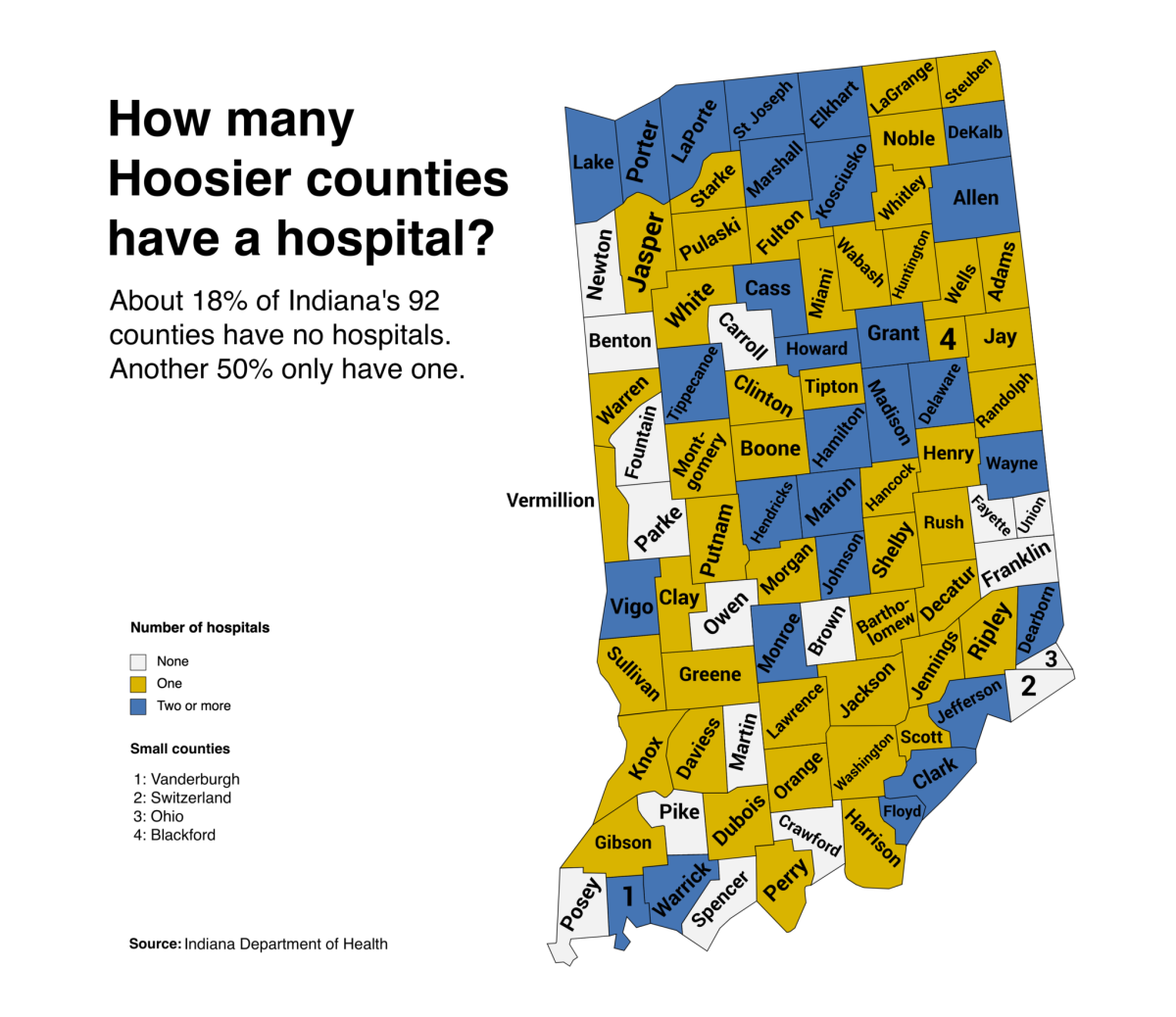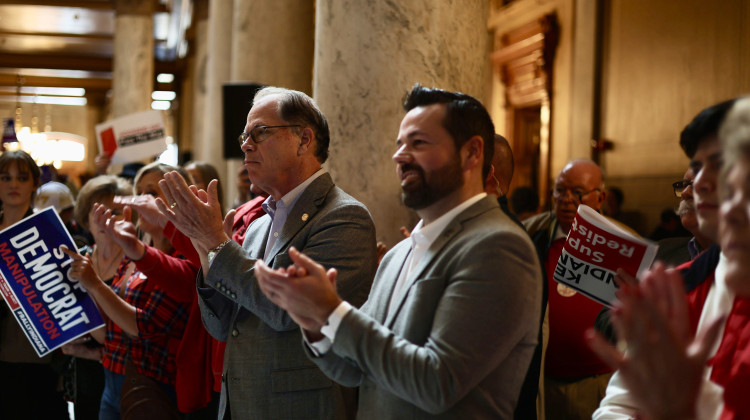
Nearly 20%, or 17, of the state’s 92 counties don’t have a single hospital; another 50% have just one.
Jonathan Borba/UnsplashIndiana lawmakers have seized on high health care costs as a priority problem to tackle this legislative session, but rural hospitals with thin profit margins are worried — and want more help from the state.
Nearly 20%, or 17, of the state’s 92 counties don’t have a single hospital; another 50% have just one, according to Indiana Department of Health data.
Nationally, over 150 rural hospitals across the country closed between 2005 and 2019. For many of these communities, the closest hospital is now more than a half hour away. An additional 19 rural hospitals closed their doors in 2020.
And more counties could join them. At least seven more Indiana hospitals are at risk of closing within the next six years, according to a January report from the Center for Healthcare Quality & Payment Reform. Six could close within three years.
The report doesn’t name specific hospitals, but Woodlawn Hospital CEO Alan Fischer worries his is among them. The independent critical access hospital, located in Fulton County, has three clinics in the area.
“Unfortunately, my facility is likely one of those at the greatest risk,” Fischer said during an Indiana Hospital Association news conference this month.
Woodlawn lost $4.5 million in 2021, $6.3 million in 2022 and hopes to limit losses to $1.5 million this year, Fischer said. That’s after $2.5 million in cost-saving measures, which he said included employee health insurance changes, lease renegotiations and physician layoffs.
Some lawmakers take aim at high costs for patients
Hoosiers pay some of the stiffest hospital prices in the country — the 7th highest, according to a May 2022 report from the RAND Corporation — despite the state’s low overall cost of living and below-average salaries.
Just before last year’s legislative session, House Speaker Todd Huston and Senate President Pro Tempore Rodric Bray sent letters to health insurance companies and healthcare systems warning that if the corporations didn’t reduce their prices, the General Assembly would.
Lawmakers appear to be carrying through with that threat this year.

Moving through the legislative process are bills that would fine overly expensive hospitals and lower prices for care delivered at hospital-owned outpatient clinics.
Another bill would ban non-compete agreements, in which hospitals limit when and where former employees practice medicine, leading some to leave their communities or the industry.
Opponents say hospitals are struggling as-is
But hospitals have protested that while they’re operating in the red, insurers are raking in cash.
One in four rural Hoosier hospitals listed in a Center for Healthcare Quality & Payment Reform database had negative profit margins in an average of 2019, 2020 and 2021 financial data.
Some lawmakers representing rural areas have pushed back against price-lowering efforts by colleagues.
“I don’t know what’s good or bad, to be honest,” Sen. Jean Leising, R-Oldenburg, said Tuesday, ahead of her vote against the chamber’s non-competes bill.
“But I know one thing: if my small hospitals have a hard time staffing good physicians, they’re already struggling financially, they’re not the hospitals [with] large assets on hand,” Leising said, those hospitals could close.
“We’ve already lost one in my district a couple of years ago to bankruptcy,” she added. “… What happens if we don’t have any rural hospitals anymore? That’s pretty serious.”
Hospitals seek more
Indiana Hospital Association President Brian Tabor told reporters during the press conference that not only do hospitals want potentially “punitive or harmful” proposals dropped, they want more help from lawmakers.
Tabor suggested raising Medicaid base reimbursement rates — current rates cover just over half the cost of providing care — or streamlining prior authorization and other administrative duties.
Multiple executives of struggling hospitals said their facilities consistently lost money on their obstetrics units, which deal with childbirth.
“We typically deliver about 12 babies per month, which does not make for a profitable service,” Woodlawn’s Fischer told the Capital Chronicle. “But if we closed our OB, we would just create what they call a ‘maternity desert.'”
Fischer instead envisioned dedicated state funding for what he dubbed “maternity oases.”
“Without a hospital in a community, that community eventually dies,” he said. With a hospital, a fire department and a school, he added, “you have a viable community — our goal is to be part of that solution.”
Indiana Capital Chronicle is part of States Newsroom, a network of news bureaus supported by grants and a coalition of donors as a 501c(3) public charity. Indiana Capital Chronicle maintains editorial independence. Contact Editor Niki Kelly for questions: info@indianacapitalchronicle.com. Follow Indiana Capital Chronicle on Facebook and Twitter.
Indiana Capital Chronicle is part of States Newsroom, a network of news bureaus supported by grants and a coalition of donors as a 501c(3) public charity. Indiana Capital Chronicle maintains editorial independence. Contact Editor Niki Kelly for questions: info@indianacapitalchronicle.com. Follow Indiana Capital Chronicle on Facebook and Twitter.
 DONATE
DONATE






 Support WFYI. We can't do it without you.
Support WFYI. We can't do it without you.